Recordings show lockdown London quieter than 1928
- Published
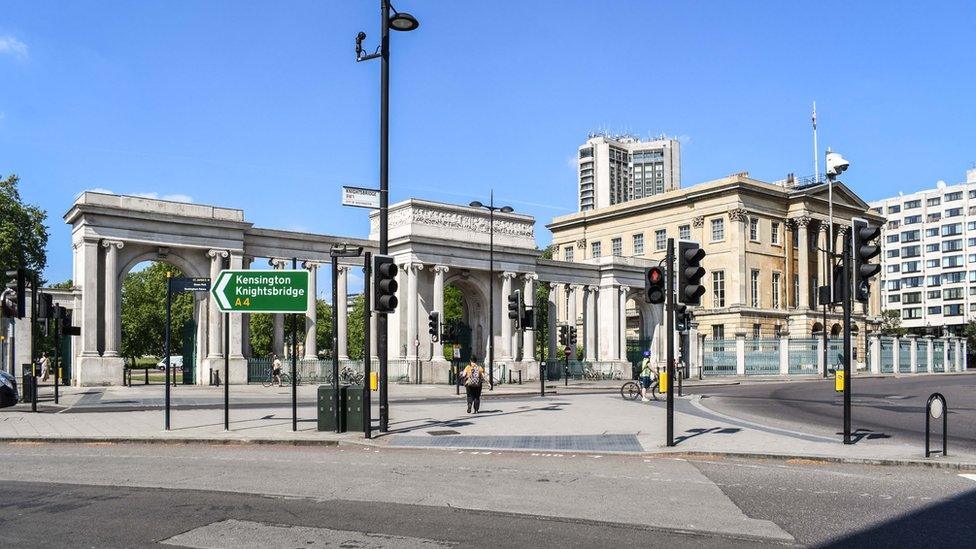
The soundscape of roads without traffic noise will be in the museum's archive
Recordings of silent London streets during the lockdown are to become part of the collection of the Museum of London.
These soundscapes will be kept in a project capturing the experiences of Covid-19.
They are being made available online alongside sound recordings of the same London streets from 1928.
And it shows how the lockdown streets of 2020 were far quieter than almost a century before.
The recordings of London's streets in 1928, being made publicly available on the museum's website, external, were gathered in the middle of outrage over excessive traffic noise.
An anti-noise pollution campaign, spearheaded by the Daily Mail, complained about "irritating" and "unnecessary" hooting - and criticised the "screeching" and noisy acceleration of "so-called sports cars" in London's West End.
The newspaper, which gathered recordings with the Columbia Graphophone Company, warned of hospital patients being unable to sleep and the constant sounds of "engines, bells and whistles".
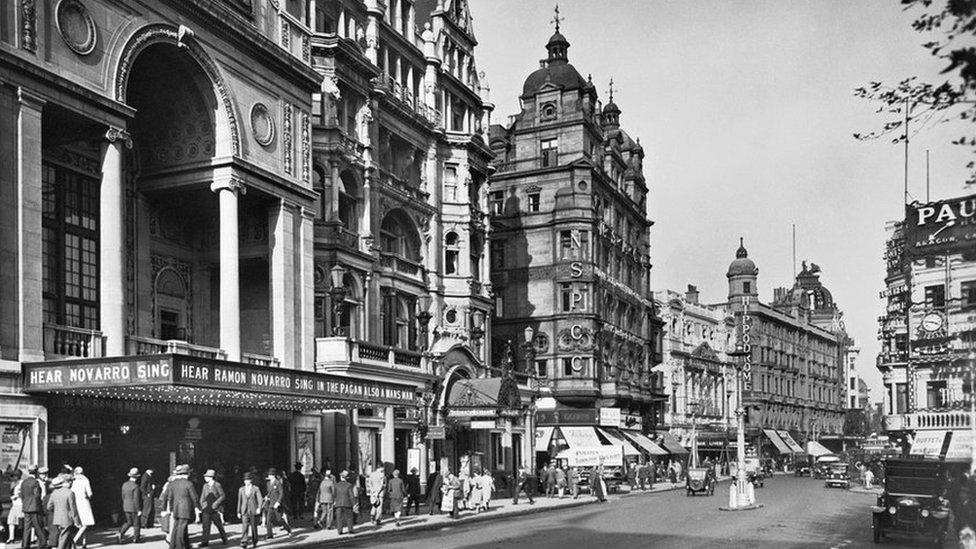
The north side of Leicester Square in the 1920s
The September 1928 recordings published by the Museum of London include a commentary picking out the brakes of a "motorbus" or the rumble of a "motorcoach", alongside the rattle of horse-drawn carriages.
"There's a motor bicycle without a proper silencer," says the commentator.
In contrast, the recordings from May 2020, external, at London locations such as Piccadilly, Brompton Road and Leman Street, show the emptiness of streets during the Covid-19 lockdown.
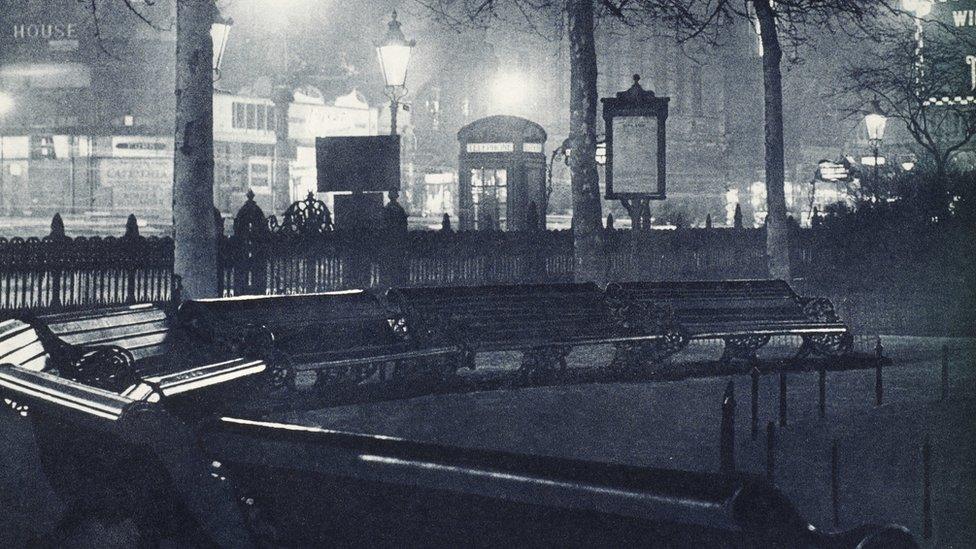
Leicester Square at night in the early 1930s
There are cars still audible, but they are separate enough to be distinguished, with gaps in between rather than a constant roar.
And the recordings, gathered by the Strings and Tins group of sound engineers, show that even in a much emptier city, there is still a wash of background noise.
The reduction in traffic noise and the absence of flights overhead became a talking point during the lockdown, with suggestions that it was a return to a much quieter time.
But that quieter time was not 1928, according to the museum's recordings.
In clipped tones, the commentator, a former naval officer, takes issue with the blaring horns and says how difficult it was to cross (pronounced "craws") the road.
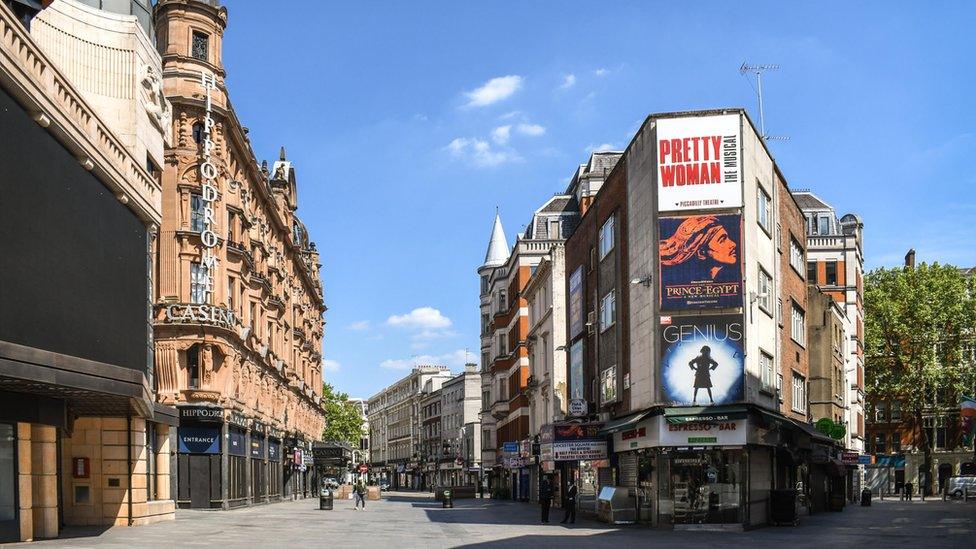
The view near to Leicester Square during the lockdown of 2020
Even though car ownership in the 1920s was much less common than now, driving was much more dangerous.
The first official road death figures were gathered in 1926 - and there were almost 4,900 fatalities, compared with about 1,900 in 2019.
Foteini Aravani, the Museum of London's digital curator, said the 1928 recordings were made when the "effects of sound pollution in central London were only starting to be understood".
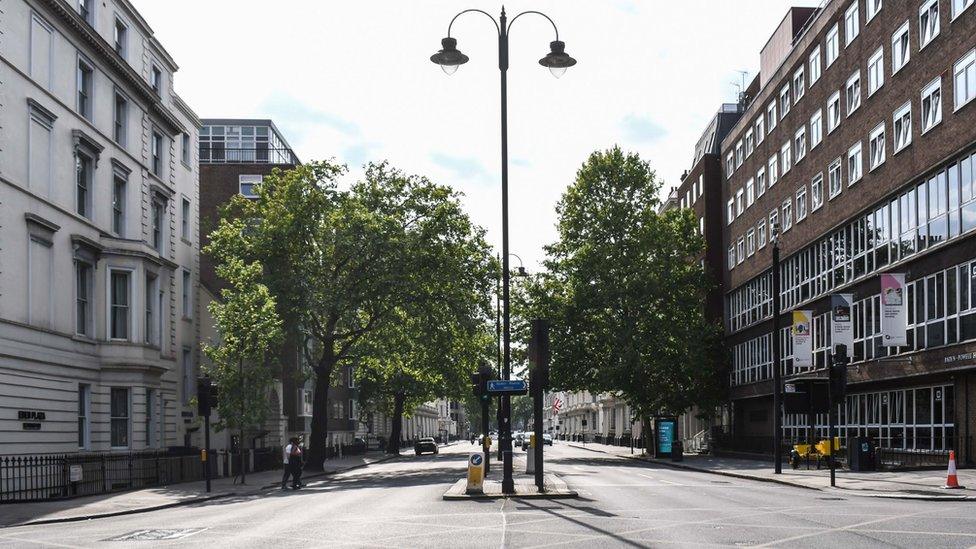
Sound engineers captured the absence of traffic in central London
A century later, she says the challenge was to record the absence of sound, which had become a "distinct aspect of London in lockdown".
"We felt it was our responsibility to capture this rare and significant moment to not only contrast the 1928 recordings, but to also provide a record of London's rarely 'silent streets' for future generations," said Ms Aravani.
Or as the Daily Mail said in 1928: "We have become so used to the perpetual noise around us that many of us fail to appreciate what our poor brains are being called upon to endure."